Five Different Types of Service Dogs
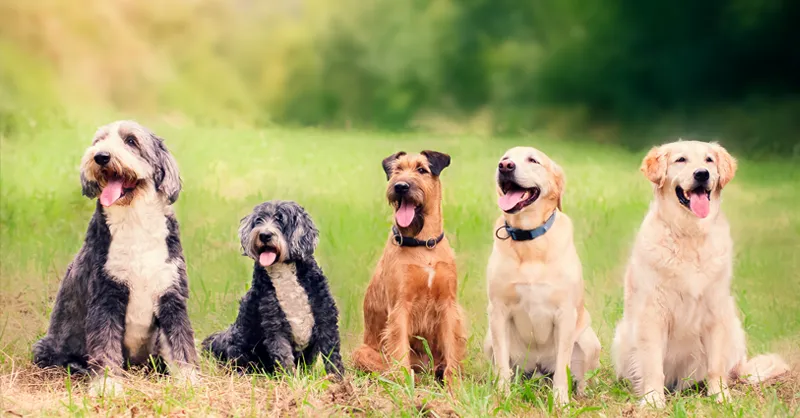
Almost 40% of U.S. households own a dog, and an average of $253 is spent each year on veterinary costs to keep family dogs in good health. This love for dogs isn’t surprising because dogs have been intertwined with human life for the last 11,000 years. Dogs are human’s oldest companions, hunting alongside us and saving our lives for millennia. Today, dogs don’t serve as our hunting partners as much as they used to, but they still work to assist us in other ways. And among the most hard-working dogs are trained service dogs. Below we’ll list the five different types of service dogs that may be at your service.
What Are Service Dogs
According to the Americans with Disabilities Act (ADA), a service animal is a dog that receives special training to execute a task that a person with a disability would not be able to do for themselves. For example, service dogs can guide vision impaired people, detect impending seizures, or obtain life-saving medication during an emergency. Service dogs are much more than a pet or a therapy animal. They quite literally work to save our lives.
Five Types of Service Dogs
- Cardiac Service Dogs
- Mobility Service Dogs
- Allergy Detection Service Dogs
- Psychiatric Service Dogs
- Guide Dogs
1. Cardiac Service Dogs
Through the sense of smell, trained cardiac service dogs can recognize dangerous changes in a person’s heart rate or blood pressure. They alert people with heart problems to take immediate interventions far quicker than people can identify the changes themselves. Although they can’t perform cardiopulmonary resuscitation (CPR), cardiac service dogs can receive training to notify emergency services. They can also obtain life-saving medication if their owner becomes disoriented or unconscious.
2. Mobility Service Dogs
Mobily service dogs do more than fetch items for their owners; they can help their owners navigate the world without falling or hurting themselves. Trained to assist people who struggle with mobility issues (like difficulty walking, paralysis, or prone to falling), mobility service dogs specifically assist their handlers’ needs.
A mobility service dog can receive training to perform various tasks, like picking up dropped items, removing small obstacles from a person’s path, or act as a brace for people with balance problems. Mobility service dogs also receive training to obtain objects for their handler, keeping their handler sitting and minimizing the chances of their handler falling. When used as a brace, mobility service dogs tend to be large-sized breeds because they must be large enough to bear at least a portion of their owner’s weight.
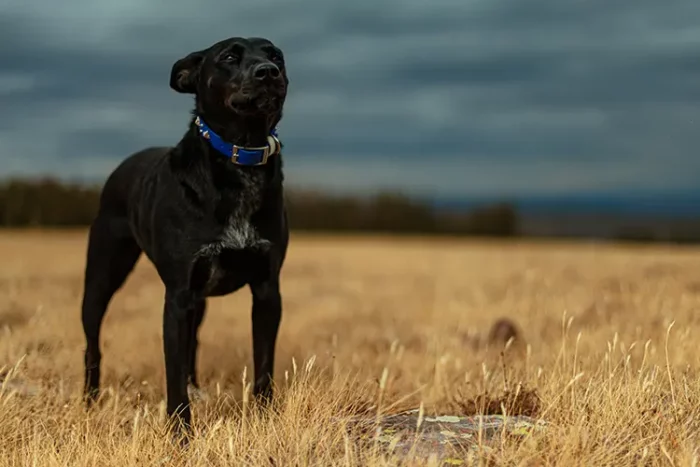
3. Allergy Detection Service Dogs
Allergen detection service dogs use their keen sense of smell to save human lives. If enough of an allergen is present, an allergen detection service dog can recognize the scent and alert its handler to the danger. For example, a person with a severe peanut allergy might be served a piece of cake without peanuts but cut with a knife previously used to cut a peanut-containing dessert. An allergen detection service dog can spot the smell of a peanut, even if it’s weak, and alert its owner it’st its presence.
It is important to note that allergen detection service dogs aren’t on the lookout for substances but odors. If a substance is present but has no odor, the service dog may not identify the allergen.
4. Psychiatric Service Dogs
Psychiatric service dogs are not emotional support animals or therapy dogs. These are legitimate service dogs and perform a specific task to alleviate their handler’s psychiatric disorder. Psychiatric service dogs are trained to sense a change in their owner and provide an intervention that assists their handler with their emotions. Psychiatric service dogs also receive training to identify triggers that can increase their handler’s agitation or anger and steer their handler away from such situations.
People who suffer from auditory or visual hallucinations can also benefit from a psychiatric service dog. The dog can obtain training to help identify if a third individual is present or is a mere hallucination. Psychiatric service dogs can also guide their handler home or to safety if the owner becomes confused. A psychiatric disorder can be frightening; therefore, psychiatric service dogs provide a layer of support and assistance at all times.
Wonder if your emotional disorder qualifies for a psychiatric service dog?
Get an assessment by a licensed health professional.
5. Guide Dogs
Service dogs for the visually impaired, or guide dogs, are the most well-known type of service dogs. It’s relatively easy to spot this type of service dog because they wear a special harness that distributes pressure in a specific way, enabling a guide dog’s handler and the dog to communicate with each other quickly. For example, crossing a busy, noisy street can be exceptionally dangerous for the vision impaired. A guide dog with a harness allows the dog to pull and tell its handler when to proceed and stop.
Unlike most other service dogs, guide dogs are trained for “intelligent disobedience,” meaning that they can go against or ignore their handler’s instructions if the situation is dangerous. They receive training to identify hazards or conditions that can jeopardize safety.
A Service Dog For All Needs
Service dogs can assist owners in overcoming any physical or mental disability. However, choosing the right dog for the job is paramount to a service dog’s successful training. But whatever your needs may be, any one of the different types of service dogs can help you live a more fulfilled and happy life.
About the Author: The writing team at Service Dog Certifications is made up of folks who really know their stuff when it comes to disability laws and assistance animals. Many of our writers and editors have service dogs themselves and share insights from their own experiences. All of us have a passion for disability rights and animals.
4 comments
Leave a Reply Cancel reply
Latest Posts
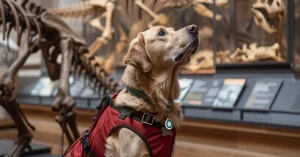
Can you bring a service dog to a museum?
Yes, you can bring your service dog to the museum! All the major U.S. museums welcome guests with service animals in accordance with the Americans with Disabilities Act (ADA). There are some areas, however, that might be off-limits. Here’s what you should know if you plan to spend a day at the museum with your […]

Read More
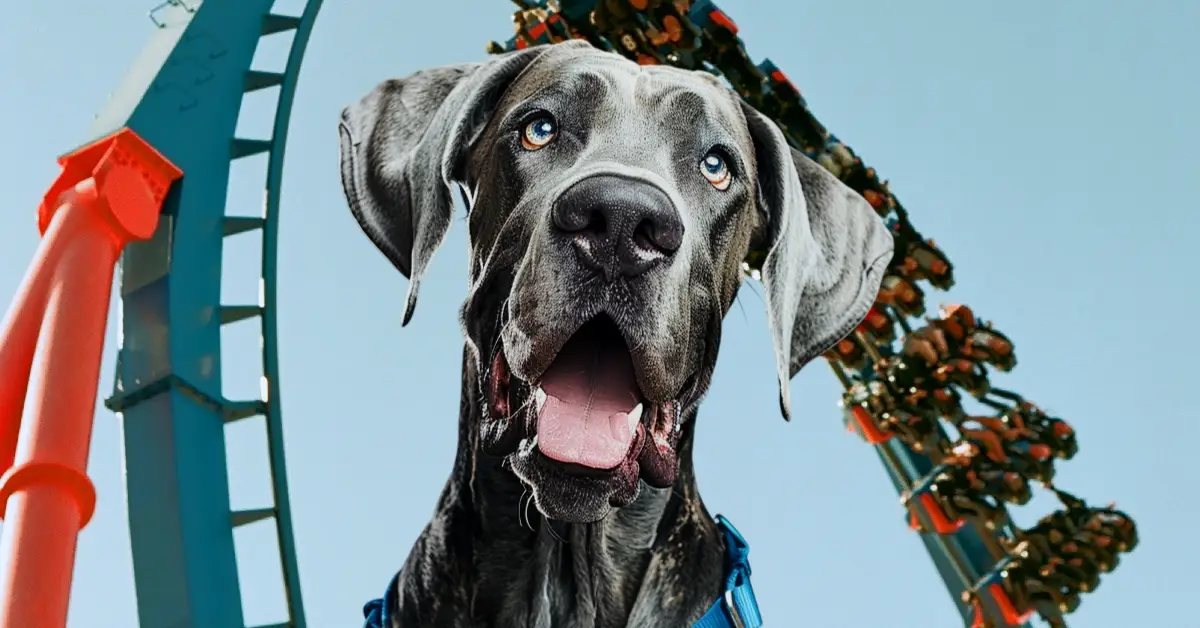
How to Bring a Service Dog to Six Flags Magic Mountain
Service dogs are welcome at Six Flags Magic Mountain so long as they are, according to Six Flags, “trained to do work or perform tasks for people with disabilities.” Of course, your dog must be housebroken and remain on a leash or harness and under your control while at the park — and the park […]

Read More
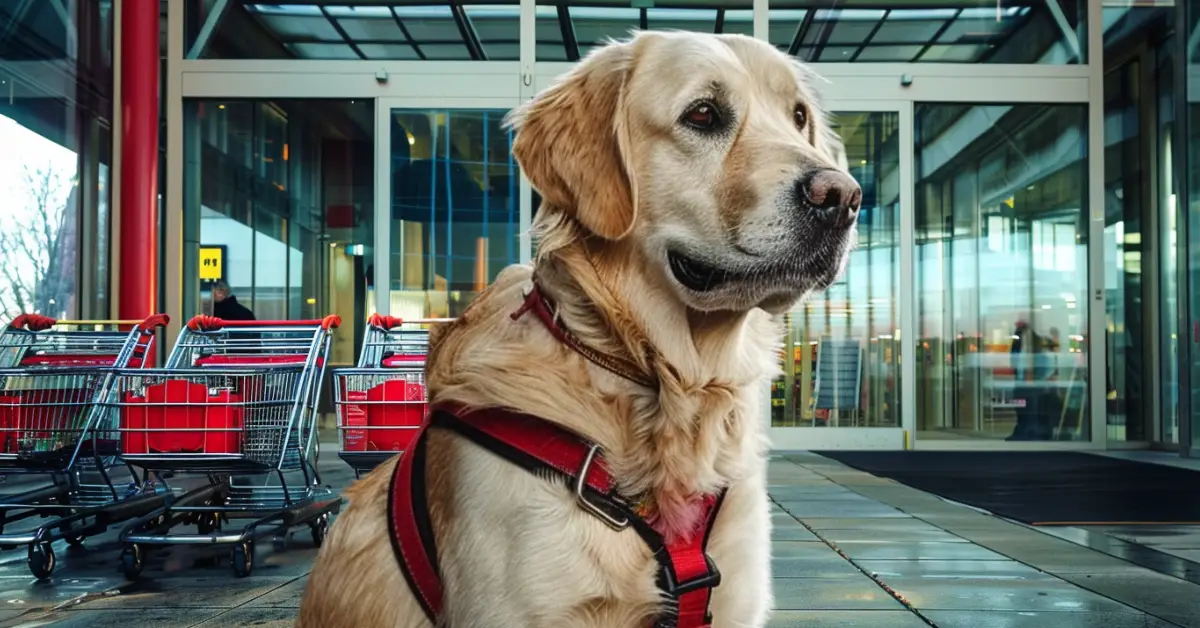
When Stores Can Refuse Your Service Dog
According to the Americans with Disabilities Act (ADA), service dogs should be allowed into any store most of the time. A store owner can legally exclude a service dog if they are actively growling, snapping at, or frightening customers, or if the dog is obviously out of the control of its owner. Ordinary behaviors — […]

Read More
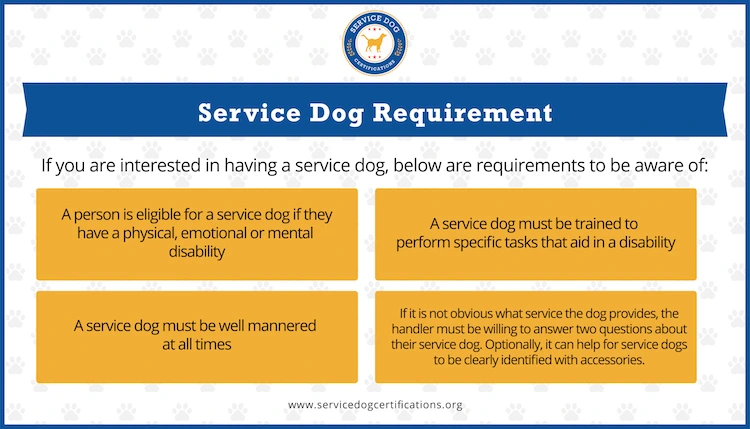

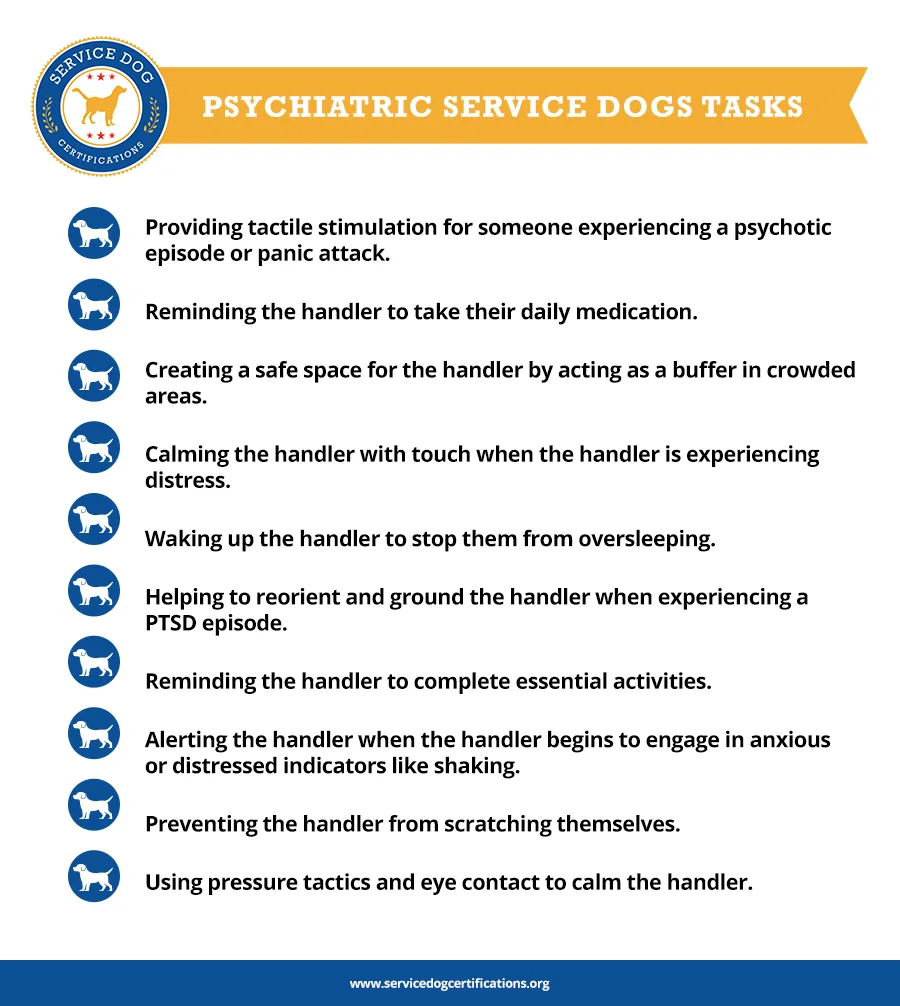

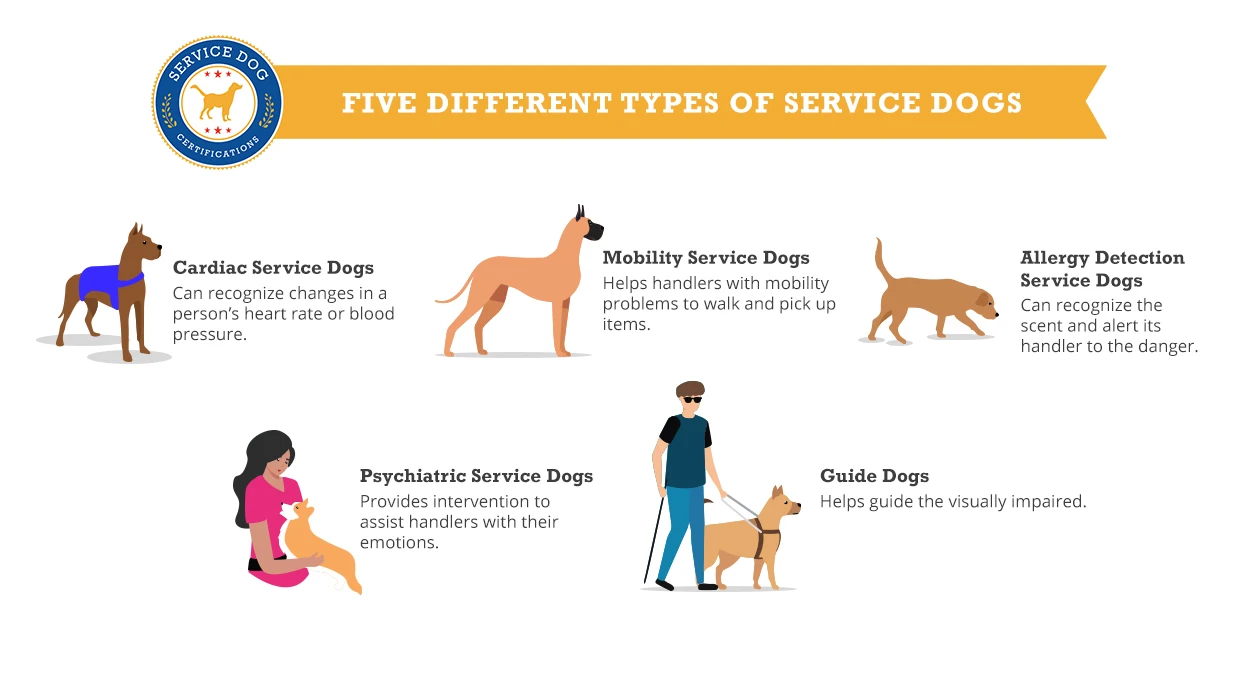
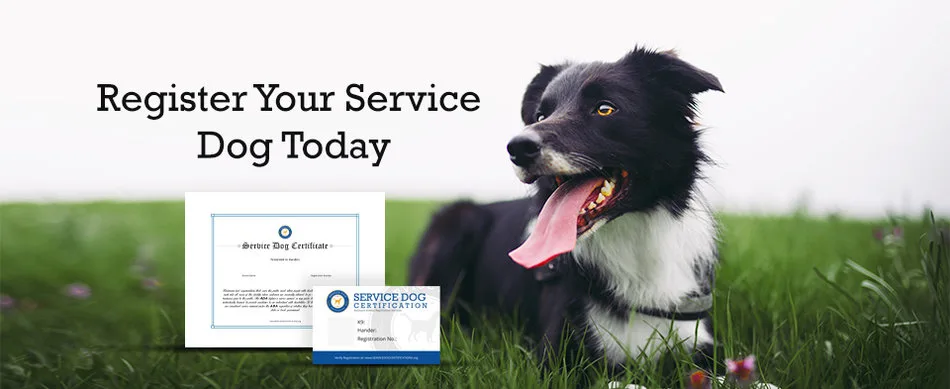
You left off Diabetic Alert Dog!
You also left out seizure alert dog!!!
Seizure alert dogs are also invaluable for their owners. There are too many types of wonderful service dogs to list in one article.
They would fall under the medical alert dog section. I actually have one and he is literally a life saver.